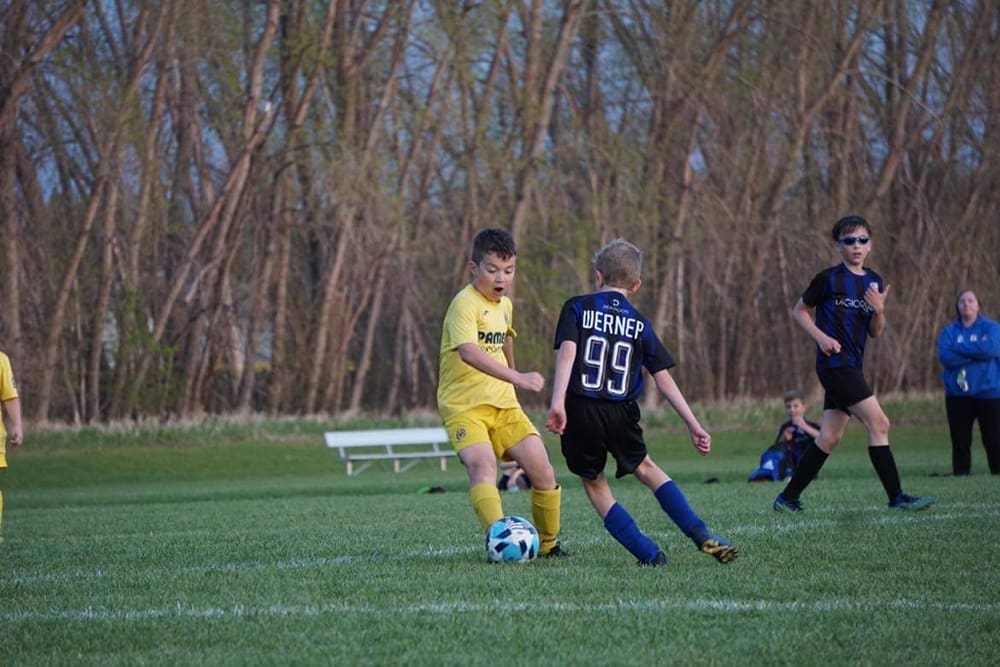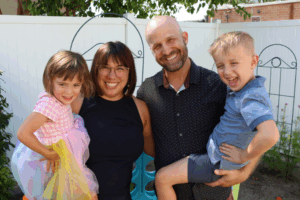We all hate to see it. The play is over, and players in the pile get up, but one player doesn’t. Sometimes you see the injury as it happens. Sometimes it is a mystery. Either way, nothing quiets a crowd like a sports injury. It does not matter whether it occurs in pre-school T-ball or the Super Bowl.
Youth sports injuries are an unfortunate, but inevitable part of any young athlete’s playing journey. The severity ranges from out-for-one-game to out-for-the-season or even out-for-the-year.
My Son’s Soccer Injury
This is a topic near and dear to me, and for all the moms out there. I am sure I am not alone. It recently happened to my son. It wasn’t during a game, but he broke his collarbone while running, well falling, at conditioning for soccer.
However, we initially didn’t think it was broken. Cohen was in pain for a couple of days, we continued to ice it and gave him Tylenol. He could move his arm and shoulder, so we thought it was just a bruised collarbone. He even went swimming 3 days after the fall. The next week he had his annual physical with his doctor before the start of the new school year. The doctor noticed his collarbone and wanted him to get x-rays. Sure enough, Cohen had a small break. He was issued a brace and the orthopedic doctor said no contact sports for at least 6 weeks.
Tears immediately followed as Cohen knew the fall soccer season was about to begin. It was so difficult as a parent to not only watch your son in physical pain but now emotional pain and blame yourself for not seeking treatment sooner. He was playing 3 days a week and now, nothing. Not to mention, he was starting middle school now, having to wear a brace and not being able to participate in PE, his favorite subject in school.
Managing Pain and Emotions
His dad and I knew we needed to talk with him about his frustrations and empathize with his feelings. We had to support him as he worked hard to return to soccer, even as we helped distract him from the injury by encouraging him to pursue other interests he could still participate in while on injured reserve.
We had him still attend practice and he sat on the bench at games and helped the assistant coach take stats. Which I believe, helped him see the game in a different way. He realized he is still part of the team and I feel that he stepped up into a leadership role, even on the bench. One of the hardest parts of being injured was him not feeling like he was part of the team. Staying closely involved helped with that.
The obvious first step, which we didn’t do, is to get a definitive diagnosis if your child is suffering from an injury and not to wait. It will be better for you and for your athlete if you know exactly what you are dealing with. When will it heal? Will they need surgery? All these uncertainties add to anxiety. Luckily for Cohen, it is healing correctly just slowly. If he continues to listen to the doctor, get plenty of rest and restrain his arm/shoulder movement he’ll be back on the field sooner. Until then, he does footwork drills, passes and shoots, and is anxiously awaiting the okay to start playing.
An injury to an athlete is devastating; however, it does not have to signal the end of sports if the doctor agrees. Cohen will heal and get back into the game. And I continuously tell him that hurrying this process is not a good idea, take the required time to heal and think long-term. A couple missed scrimmages in practice and one missed game out of many will not hinder their long-term success.

Mallory Connelly
Babies & Toddlers
In addition to the time I devote to being a mom, I also work full-time outside the home, which means my day is hardly ever as simple as nine to five. With an all-too-established schedule, as soon as I walk through the door, my day doesn’t end, but rather just begins. It’s a balancing act, especially with two children, but being a mom is one full-time job that I never want to quit!









